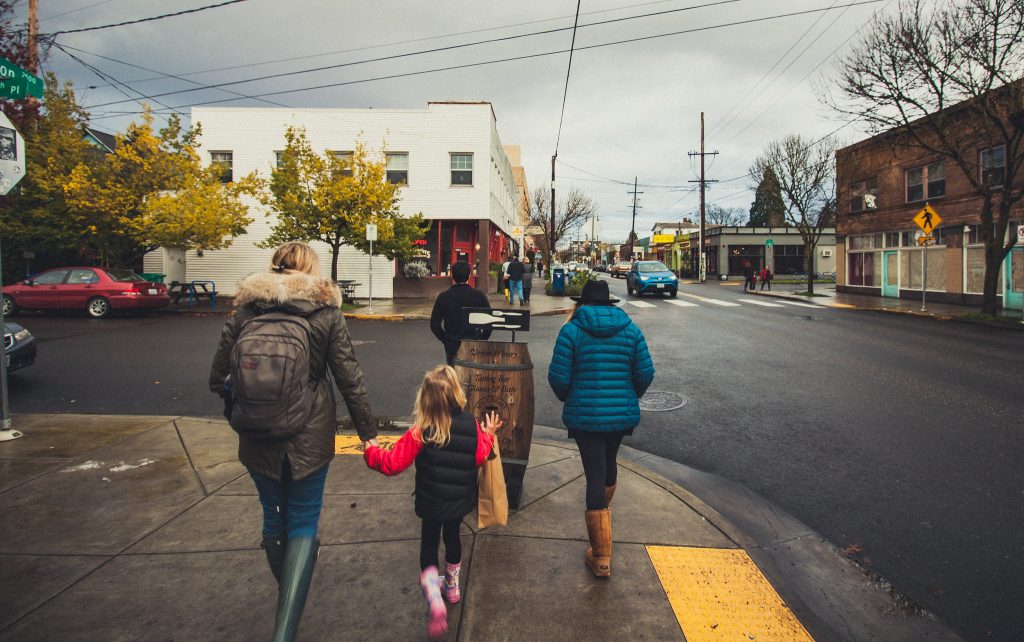Mayors tell the Senate that transit, biking, and walking are climate change solutions
Testimonies from mayors at a recent Senate hearing showed that cities understand that reducing driving and expanding other transportation options is key to reducing greenhouse gas emissions and boosting local economies at the same time.
Last week, the Senate Democrats’ Special Committee on the Climate Crisis held their first hearing, which focused on what cities across the country are doing to combat and adapt to climate change. In their testimonies, mayors from Atlanta, Honolulu, St. Paul, Pittsburgh, and Portland, OR highlighted the need to reduce emissions from transportation and maintain and expand their existing transit systems.
Transportation is the single largest source of greenhouse gas (GHG) emissions, contributing 29 percent of the United States’ total GHG emissions. While states and cities are setting ambitious climate goals to reduce their emissions and to even achieve net-zero emissions, many are finding that they will not be able to achieve those goals without reducing emissions from the transportation sector. The best way to do that isn’t just switching to electric vehicles, but by also reducing how much people drive, or vehicle miles traveled (VMT).
During the hearing, it was clear that cities recognize the need to prioritize biking, walking, and transit as a way to both reduce emissions and boost their economies. Portland Mayor Ted Wheeler hit on the connection between climate change and transportation, testifying that “switching to riding public transportation is one of the most effective actions individuals can take to reduce their carbon footprint. In the Portland region, there is 60 percent less carbon emitted for each mile taken on public transit, compared to driving alone.”
Honolulu came to a similar conclusion, with Mayor Kirk Caldwell stating that in order to meet their GHG reduction goals, they need to shift the transportation system towards “more biking, walking, mass transit, renewable fueled vehicles, and other new mobility options.” A recent report from Smart Growth America and Rhodium Group found the same thing. In order for Hawaii to meet its ambitious climate goal of 100 percent clean energy by 2045, it will need to improve transit and land use to encourage walking and biking.
But the mayors weren’t just talk: they highlighted actions their cities are taking to improve biking, walking, and transit. St. Paul is working on “improving pedestrian and bike infrastructure to make it safer and easier to get around” and that Honolulu is “investing significant political and financial capital into transformational projects with high short-term costs and long-term gains, (e.g., rail, Complete Streets, bike lanes, electric buses).” Mayor Wheeler of Portland spoke extensively on the city’s push to “make walking, biking, and using public transit safer and more attractive to maximize the use of our limited road space and help the entire road system work more efficiently.”
What should the federal government’s role be?
This hearing was meant to showcase what cities are doing to become more resilient, but it also offered a chance for cities to tell the federal government what they need in order to achieve ambitious climate goals. As expected, much of it came down to funding.
Mayor Wheeler emphasized the need for a reliable federal partner in funding multi-modal transportation networks, stating that his city “continues to suffer from a severe shortage of transportation funding, even as local voters and state governments have recently increased transportation funding.” He encouraged the continued funding of the FTA’s Capital Investment Grant Program (CIG) and the BUILD program. As we saw during an oversight hearing this week on the FTA’s administration of the CIG program, there is a growing demand for federal funding of transit projects in a timely and transparent manner.
Atlanta also needs additional funding to build out their transit system. Mayor Keisha Lance Bottoms testified, “Atlanta taxpayers have also voted with their pocketbooks to build out sidewalks and last-mile connectivity to our transit system” in a recent election. The city is now moving forward with a $2.7 billion expansion of their transit system that will give people more transportation options and increase access to 350,000 jobs. Mayor Melvin Carter of St. Paul asked for the federal government to “help us build for the 21st century, with major investments in pedestrian, bicycle, and transit infrastructure.”
Taxpayers in these cities and others across the country are willing to pay more for better transportation. Unfortunately, the federal government spends the vast majority of its resources on expanding highways—exacerbating the climate crisis—while transit funding gets much less funding and there are many more hoops communities must jump through to access it.
To wrest some of the funding away from building more highways and provide cities and towns with more flexibility in their spending, Mayor Caldwell explicitly encouraged the senators to support the Complete Streets Act of 2019, which was recently introduced by Senator Ed Markey (D-MA) and Rep. Steve Cohen (D-TN). The legislation would require states to set aside money for Complete Streets projects, create a statewide program to award the money (and provide technical support), and adopt design standards that support safer, complete streets.
Cities get it
Cities understand that improving transportation infrastructure can have a wide range of benefits. Creating better and more connected multimodal transit systems not only reduces emissions, but it also enables people to move quickly and safely within cities and promotes vibrant economies. Much of the national discourse on reducing emissions from transportation counts on electric vehicles saving us, but cities know that’s simply not enough. Providing transit, safe bike infrastructure, and walkable areas is just as important and the federal government has an important role in helping our country rise to meet that challenge. Mayor Wheeler summed it up best: “The investments that have helped reduce carbon emissions are also what make people want to live, work, and play.”





















1 Comment